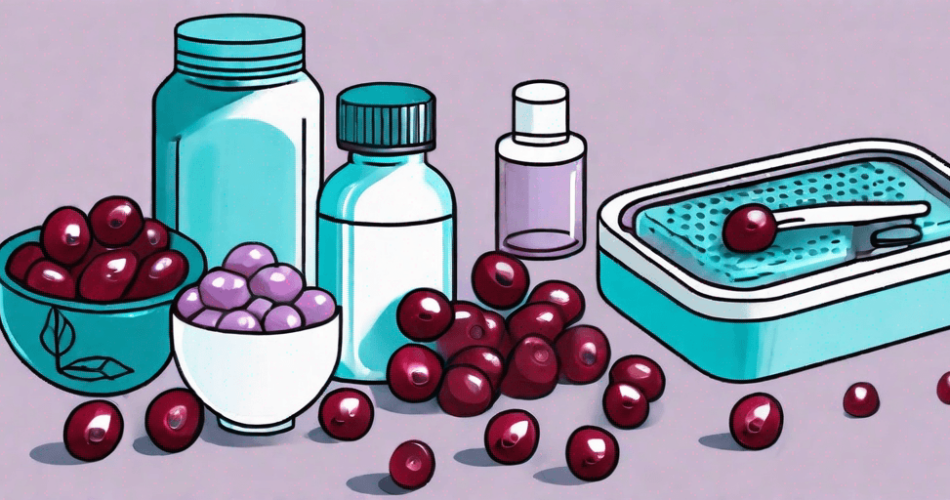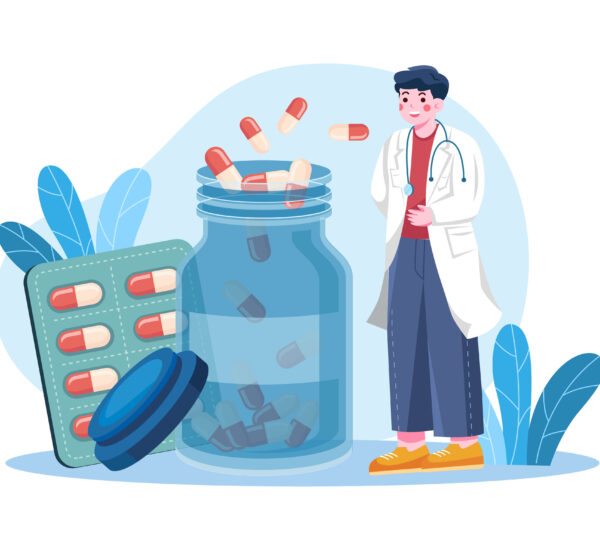Conditions like UTI are more common in women and typically cause discomfort, pain, and inconvenience in daily life. However, with the right knowledge and effective approaches for UTI treatment in female, it can be cleared and prevented. That’s what we’ll be exploring today for understanding on how to combat this painful infection that compromises the urinary tract of patients. Let’s begin!
Why UTI is a Threat to Women Urinary Health

UTIs, or urinary tract infections, pose a particular threat to women’s urinary health. This is due to the anatomical differences between men and women. The female urethra is shorter and closer to the anus, which makes it easier for infectious bacteria to enter the urinary tract and cause infection. In this case, the most common culprit is the bacteria Escherichia coli (E. coli), which can be a source of infection once it transfers to the urinary tract and infests.
Aside from that, UTI can be common to women due to factors such as pregnancy and menopause. During these phases in life, the infection can occur because of a lack of estrogen, which is a common hormonal imbalance during adulthood. Meanwhile, in pregnancy women can be prone to infection with the constant pressure against the bladder. Thus, affecting the flow of urine, resulting in UTI in pregnancy.
With these common risks to women’s urinary health, it is important to handle everything immediately. That involves knowing the possible treatment plan prescribed by experts to avoid further complications such as other causes of UTI.
Seeking Medical Help for UTI Treatment Female Cases

When it comes to seeking medical help, there are certain factors that signify the need for medical help. That involves the symptoms associated with urinary tract infection and its frequent occurrence. Common symptoms of a UTI may involve the following:
- frequent urination
- pain or burning during urination
- cloudy or strong-smelling urine
- pelvic pain
In some cases, urinary tract infection may also cause lower back pain, fever, and blood in the urine. If you experience these symptoms, it’s important to see a healthcare professional for a proper diagnosis.
Health Check up Process with a Urology Expert for UTI Treatment Female
Once you’ve decided to visit a doctor to address urinary tract infection, what patients can expect is a straightforward diagnosis process. During the check up, the urologist will likely perform a physical examination, ask about your symptoms, and may request a urine sample for testing. The urine culture will help analyze the condition further as it can produce results such as infection from microorganisms in the urine.
In some cases, additional imaging tests, such as an ultrasound or CT scan, may be ordered to evaluate the urinary tract for any structural abnormalities or complications. With this process, experts can check whether or not the infection was caused by underlying issues such as kidney stone or kidney infection.
Furthermore, medical professionals will explain risk factors that may have led to this infection. There are instances wherein improper hygiene can increase the probability of infectious diseases like UTI. Moreover, in cases of recurrent urinary tract infections, there may be risk factors that result from the occurrence. Expect to have a proper introduction of these factors during the consultation session.
Treatment Options for UTI
Prescription as UTI Treatment for Women

Dealing with UTI will commonly involve prescription of medicines such as antibiotics. In cases like this, it is vital to properly follow the amount of dosage to ingest and how long antibiotic treatment should be taken. That way, the effectiveness of the medicine can happen, leading to a better urinary health.
There are several prescribed medicines that can occur, and some of the common medications are the following:
Amoxicillin
Amoxicillin is a commonly prescribed antibiotic for UTI treatment in women. It belongs to the class of penicillin drugs and works by preventing the growth of bacteria that cause the infection. When taking amoxicillin, it’s important to follow the prescribed dosage and complete the full course of treatment, even if symptoms improve before finishing the medication.
Ciprofloxacin
Another commonly prescribed antibiotic for UTI treatment is ciprofloxacin. This medication belongs to the fluoroquinolone class of antibiotics and effectively kills bacteria responsible for urinary tract infections. As with any antibiotic, it’s important to take ciprofloxacin as directed by your healthcare provider, typically for a specified period of time. It is crucial to complete the full course of treatment, even if you start feeling better, as stopping the medication prematurely may lead to antibiotic resistance and a recurrence of the infection.
Trimethoprim-sulfamethoxazole
An antibiotic also known as TMP-SMX or Co-trimoxazole, is another commonly prescribed antibiotic for UTI treatment in women. This combination medication works by inhibiting the growth of bacteria causing the infection.
It is important to note that the effectiveness of these medications can vary depending on the specific type of bacteria causing the urinary tract infection. Therefore, it’s crucial to consult with a health care provider who can properly diagnose your condition and prescribe the most appropriate medication for your specific case.
Furthermore, when it comes to uti in pregnancy, treatment options can be different from the commonly prescribed medications. Due to the current condition, the urologist will still need to check the health status of the fetus, especially with the occurrence of infection in the mother’s urinary tract. Having a proper check up and tailored treatment plan, it can help ensure that pregnancy will not be at risk.
Non-Prescription Treatments for UTIs

Aside from relying on medications, there are other forms of uti treatment female patients can explore. These options are the non-prescription types, which anyone can try at the expense of their comfort. Let’s check the possible treatment plan below!
Hydration and Its Role in UTI Treatment
One of the most important factors in UTI treatment is staying properly hydrated. Drinking an adequate amount of water helps flush out bacteria and toxins from the urinary system. Aim to drink at least 8 glasses of water per day, but increase your intake if you are experiencing UTI symptoms.
When you drink enough water, it not only helps to dilute your urine but also increases the frequency of urination. This increased frequency helps to flush out any bacteria that may be present in the urinary tract. Additionally, water helps to maintain the overall health of the urinary system by keeping the bladder and urethra well-hydrated and functioning optimally.
It is important to note that not all fluids are created equal when it comes to UTI treatment. While water is the best choice, it is advisable to avoid caffeine and alcohol as they can irritate the bladder and worsen UTI symptoms. Also, opt for herbal teas or unsweetened cranberry juice, which can have additional benefits in preventing bacteria from adhering to the bladder wall.
Over-the-Counter Products for UTI Relief
While non-prescription products cannot cure UTIs, they can provide relief from uncomfortable symptoms. Over-the-counter pain relievers, such as ibuprofen or acetaminophen, can help alleviate pelvic pain and reduce fever. These medications work by reducing inflammation and blocking pain signals, providing temporary relief while the body fights off the infection.
In addition to pain relievers, urinary analgesics are also available in most pharmacies. These medications contain ingredients that help numb the urinary tract, providing temporary relief from pain and discomfort. They work by targeting the nerves in the urinary system, reducing the sensation of pain. However, it is important to note that these medications should not be used as a substitute for medical treatment, and it is always advisable to consult a healthcare professional.
It is worth mentioning that while over-the-counter products can provide relief, they do not address the underlying cause of the UTI. Furthermore, there can be possible side effects which can harm the patient in the long run. That’s why if symptoms persist or worsen, it is essential to seek medical attention for proper diagnosis and treatment.
The Impact of Diet on UTI Recovery
Believe it or not, your diet can play a role in UTI recovery. Some foods have properties that support the immune system and help fight off infection. Cranberry juice, for example, contains compounds that can prevent bacteria from adhering to the bladder wall. Studies have shown that regularly consuming cranberry juice or taking cranberry supplements can reduce the risk of recurrent UTIs.
In addition to cranberry juice, incorporating probiotics into your diet can also help maintain a healthy balance of bacteria in the urinary tract. Probiotics are live bacteria and yeasts that are beneficial for your health, especially your digestive system. They can be found in yogurt and other fermented foods. These beneficial bacteria help to crowd out harmful bacteria in the urinary tract, reducing the risk of UTIs.
Furthermore, maintaining a well-balanced diet that is rich in fruits, vegetables, whole grains, and lean proteins can provide the necessary nutrients to support your immune system and overall health. A strong immune system is better equipped to fight off infections, including UTI.
It is important to note that while diet can play a supportive role in UTI recovery, it should not be considered a standalone treatment. If you suspect a UTI or have been diagnosed with one, it is crucial to seek medical advice for appropriate diagnosis and treatment.
Maintaining a Healthier Urinary Tract

While the introduced forms of UTI treatment in women are effective, it is always better to prevent the condition from occurring in the first place. By making simple lifestyle changes and practicing good personal hygiene, you can reduce your risk of future UTIs and maintain optimal urinary tract health. Let’s discuss how it can happen.
Lifestyle Changes for UTI Prevention
One of the most effective ways to prevent UTI is to urinate on time. Holding the urine is one of the possible causes of UTI, so it’s best to relieve yourself whenever the bladder sends you a signal.
Staying hydrated is also important for UTI prevention. Drinking plenty of water helps to dilute urine and flush out bacteria from the urinary tract. It is recommended to drink at least eight glasses of water a day to maintain proper hydration.
The Role of Personal Hygiene in UTI Prevention
Good personal hygiene practices play a crucial role in preventing UTI. When using the toilet, it is important to wipe from front to back to avoid spreading bacteria from the anal area to the urethra. This simple step can significantly reduce the risk of infection.
Additionally, avoiding the use of irritants such as harsh soaps or douches in the genital area. Utilizing harsh feminine wash can throw off the vaginal flora balance. When that happens, bacterial growth can occur, resulting in the possible outcome of contracting UTI.
Lastly, choosing the right underwear can make a difference. Breathable underwear materials, such as cotton, and avoid tight-fitting clothing are some of the ideal clothing to use to avoid UTI. That’s because moisture and heat can create an environment that promotes bacterial growth, so choosing the material of the clothing can help you maintain a healthy genital area, as well as prevent UTI.
Regular Check-ups and UTI Prevention
It is important to discuss any concerns or symptoms you may have with your healthcare provider. Early detection and treatment of UTI can prevent complications and ensure prompt relief. Your healthcare provider may recommend additional preventive measures, such as cranberry supplements or probiotics, to support urinary tract health.
Furthermore, don’t hesitate to attend a follow up check up when necessary. Doing so allows you to address your condition fully. Thus, ensuring recovery from the urinary tract infection.
If you don’t know which doctor to visit for a consultation, you can try using online consultation platforms. This tool is suitable for remote consultations. especially if immediate intervention must occur.
Final Takeaway
Finding effective UTI treatment for female patients is possible through proper guidance from health experts. Preventing UTI can happen through simple lifestyle changes, good personal hygiene practices, and regular check-ups with a healthcare professional.By taking proactive steps to reduce the risk of infection, you can enjoy optimal urinary tract health and minimize the discomfort associated with UTI. Ensure proper diagnosis and treatment plan for your condition through an online consultation with a urologist. Book a session today!



